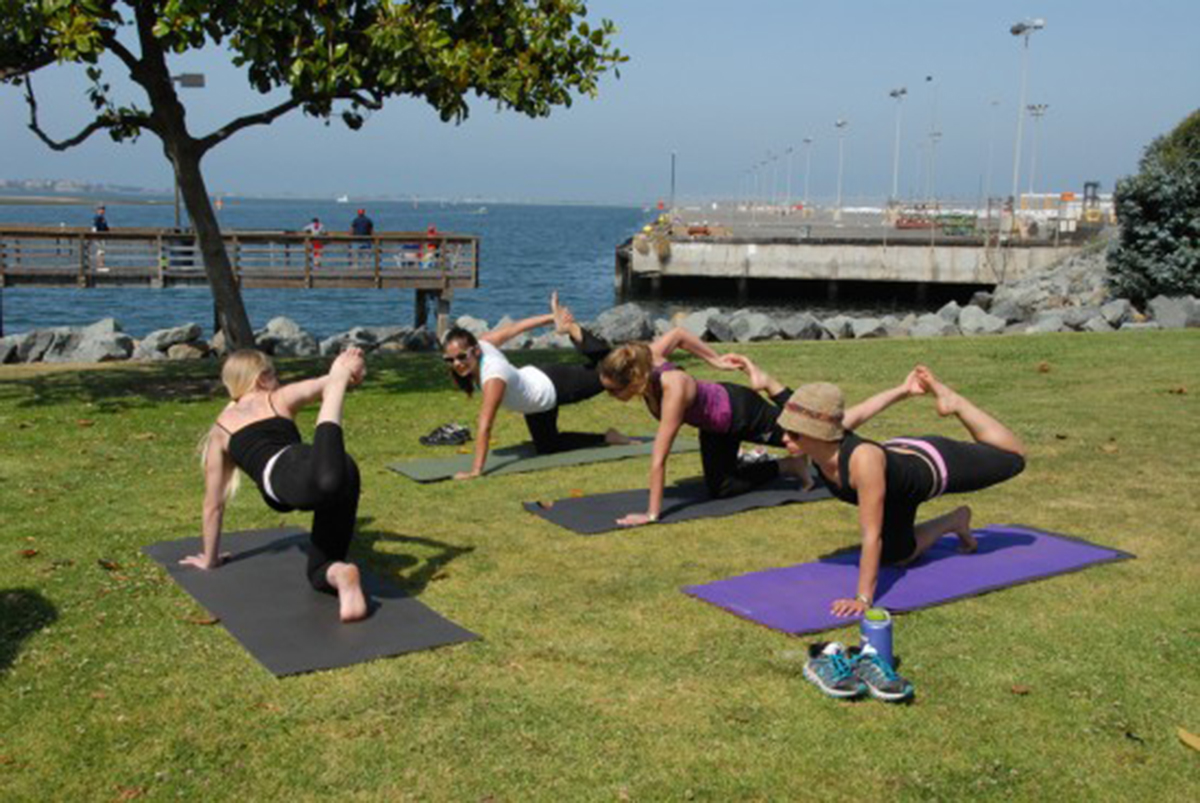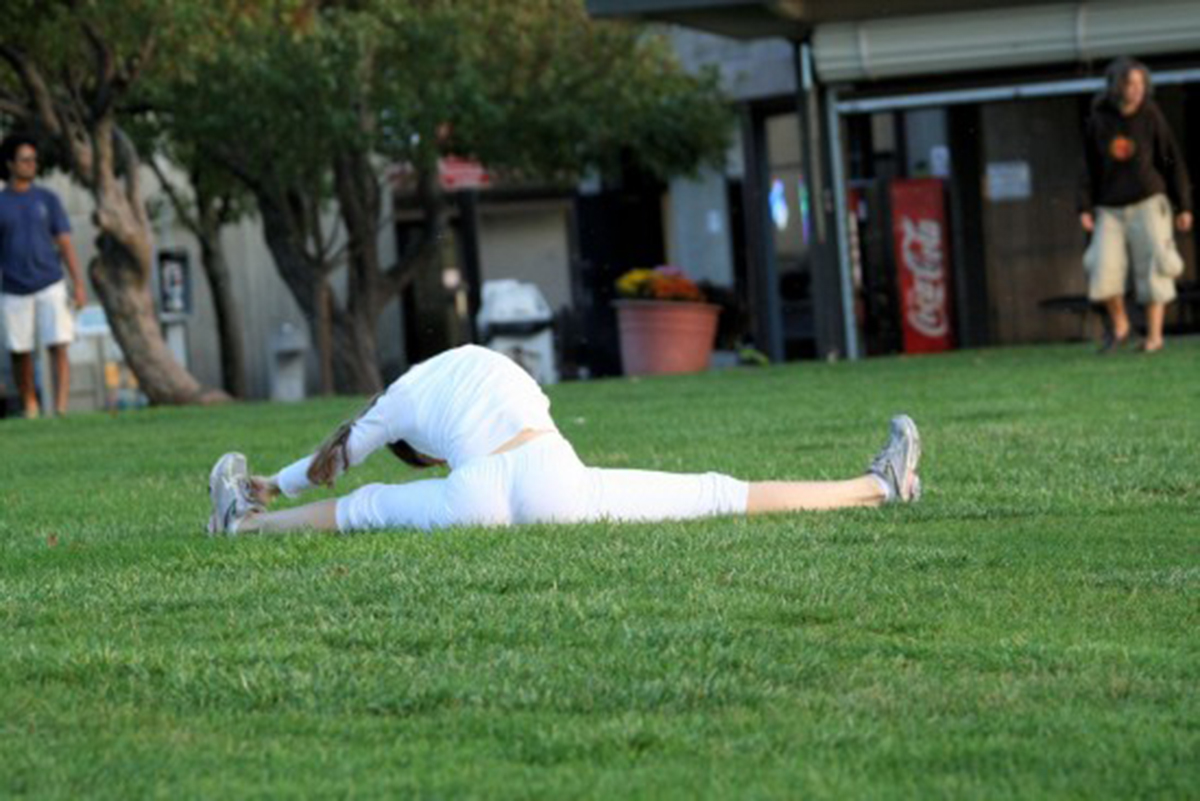It’s probably been drilled into you since your gym class days at school.
Stretching is vital before a warm up.

You need stretching to help loosen your muscle fibers, warm up your joints, get rid of any tightness and soreness and help prevent injury. At least that’s what they say.
Like anything though, the research and knowledge on stretching has grown phenomenally in recent years, and the experts are now starting to realize that what we’ve all been doing in regard to stretching in the pre-training warm up may actually not be any good for injury prevention at all.
Let’s take a closer look at static stretching first though.
What is Static Stretching?
Static stretching involves holding a stretch for a sustained period of time. Using typical examples such as the quadriceps stretch – standing on one leg while pulling the other leg up to your butt – or the pec stretch -- performed by holding your arms up at 90 degrees with your forearms against the sides of a doorway while pushing your body weight forward – we’ll describe static stretching.
The idea is to take the stretch to around a level 6 or level 7. This means that if a level 1 meant you were hardly feeling the stretch at all, and a level 10 was excruciating pain, feeling like your muscles were about to rip, a 6 or 7 would be moderately uncomfortable.
You’d generally hold this stretch for 15 to 20 seconds.
Now, this is all well and good. You certainly can’t argue that this stretches and loosens your muscles. But is that necessarily what you want before training?
The Trouble with Static Stretching
The issues with static stretching are twofold.
Many people stretch simply as a matter of course, when in reality, it just isn't needed. Everyone will have tight muscles somewhere, but, as the theory goes, for every action, there is an equal and opposite reaction. In the realms of stretching, this means that if one muscle is tight, it’s highly likely the opposite muscle is weak. If you have tight quads for instance, your hamstrings are probably loose and weak, which would render static stretching them virtually redundant, as they don’t need to be any more flexible.
Think of your muscles like a spring. When they’re coiled up and have a degree of tension, they can fire more explosively. They’ll be more powerful, forceful, and ultimately – stronger. Now, if you unwind that spring, there’s no way it’s going to be as powerful, and it’s the same for your muscles.
By stretching them, you don’t exactly uncoil them as you would a spring, but you do “turn off” the spindle fibers and receptors that are responsible for sending signals back to the brain. This means your muscle reaction time may be down and by getting rid of the tension, you reduce your strength potential.
Read More: 7 Stretching Exercises You Should Perform
If tight adductors stop you from squatting without your knees caving in for instance, or you can’t get the shoulder mobility to perform overhead presses without stretching your lats first, then some targeted static stretching can be beneficial.
Dynamic Stretching – The Only Way To Go
You’d be forgiven for being extremely confused by now, and wondering where on earth stretching fits into your plan, if at all.
The answer, at least in terms of static stretching, is that you should perform traditional static stretching after your workouts, focusing on the areas you've trained, and also on days between training, looking to target tight areas.

Dynamic stretching simply involves extended range of motion movements. These have two benefits. Firstly, they increase mobility, but without weakening the muscles like static stretching does, but they also get you moving, increase your heart rate and get your blood flowing and joints lubricated a lot more effectively than static stretches.
This movement starts to warm up your quads, hamstrings, glutes, lats, pecs and shoulders. But the interesting thing you’ll notice is that the more reps you do, the better your technique will get and the more mobile you’ll feel, plus you’ll start to warm up and get out of breath. Therefore, you’re getting all the benefits of a traditional warm up, without any of the strength-sapping downsides.
Other good examples of dynamic movements include
- T-Push-ups, where you perform a push-up, then lift your arm and rotate your body at the top of every rep to make your body into a T position. Just make sure to change arms each time.
- Spiderman Steps. Again, assume a push-up position, hold it there, and bring your left knee up to your left elbow, then right knee to right elbow.
- Cross Body Mountain Climbers – as above, but bring the knee underneath your body. So left knee to right elbow and vice versa.
- Rotational Lunge – lunge forward with your left leg, while twisting your torso to the left, then lunge with your right leg and twist to the right.
- Split Squats – stand with your left foot on a bench behind you and your right flat on the floor about two feet in front. Squat down and pause for three seconds while feeling the stretch in your hip flexor, then stand back up. Do all your reps on one side before switching.
-
Leg Swings - stand beside a wall or hold onto a sturdy object for balance. Swing one leg forward and backward in a controlled motion. Repeat for 10-15 swings and then switch to the other leg. This exercise activates the hip flexors, glutes, and hamstrings. It also enhances leg mobility.
-
Arm Circles - extend your arms out to the side at shoulder height. Start by making small circles and gradually make them larger. It warms up the shoulder joints, deltoids, and upper back muscles.
-
Inchworms - start in a standing position. Bend forward and touch the ground with your hands. Walk your hands out into a plank position and then walk your feet up towards your hands. Repeat. You will stretch the hamstrings, activate the core, and warm up the shoulders and wrists.
-
High Knees - while standing, quickly bring one knee up towards your chest and then the other, as if you're running in place. It warms up the hip flexors, calves, and gets the heart rate up.
Read More: 8 Myths about Stretching
To advance these even further, try to make every rep explosive and dynamic, and aim to feel a stretch on each move just for a second or so – long enough to increase your flexibility, but not so long the muscle starts to weaken.
There aren't any strict rules for a dynamic warm up, and you could even include things like jumping rope, hurdle step overs, step ups and so on.
- Static vs.Dynamic Flexibility, by Brian Mackenzie, Accessed October 17th, 2013
- www.brianmac.co.uk/articles/scni43a4.htm
- Photo courtesy of Port of San Diego by Flickr : www.flickr.com/photos/portofsandiego/7244594932
- Photo courtesy of tonydude919 by Flickr : www.flickr.com/photos/98777704@N00/1471599810/


Your thoughts on this